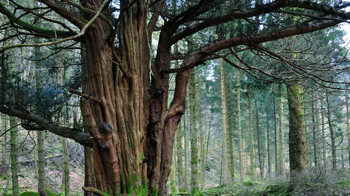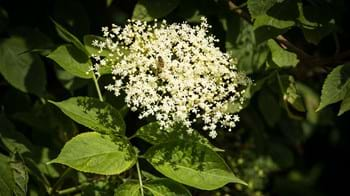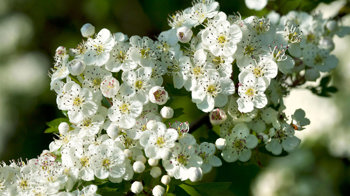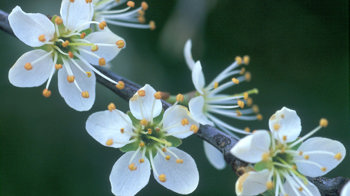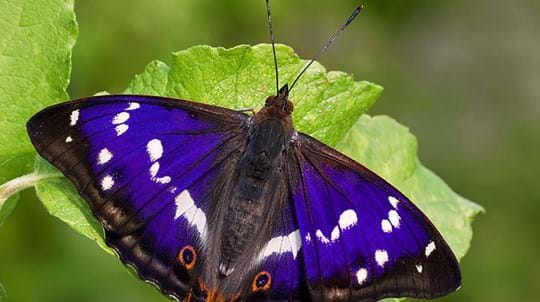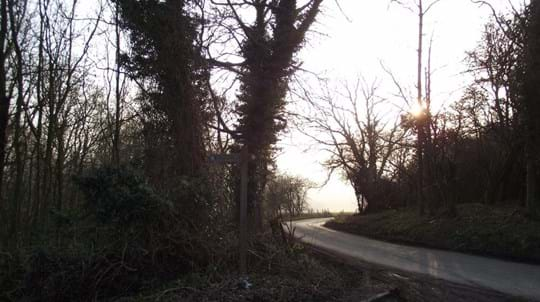
Marden Park
Woldingham

Woodland Trust wood group
- Great Church Wood
- Marden Park
5.02 ha (12.40 acres)
TQ369547
Explorer 146
OS Landranger 187
This mosaic of ancient broadleaved woodland, newer planting and rare chalk grassland sits high on the beautiful North Downs of East Surrey. Its stunning spring flowers, amazing variety of colourful butterflies in summer and rich autumn hues make the wood a wonderful place to visit throughout the year.
Features
- Parking nearby
- Public access
- Broadleaved woodland
How to get to Marden Park
Marden Park is set on the narrow plateau and slopes of the North Downs in East Surrey, close to the village of Woldingham. The 67.3-hectare (155-acre) woodland is made up of Marden Park and Great Church Wood.
The wood is in an Area of Outstanding Natural Beauty (AONB) as well as the Woldingham and Oxted Site of Special Scientific Interest (SSSI). The area is of international importance because of its strips of old coppiced trees, wooded ravines, small carrs (waterlogged sections) and conifers, as well as yew and evergreen box woodland.
From Woldingham, take the Northdown Road, which runs south from Station Road (the road through the village centre). Follow Northdown Road for 1.2km (0.8 miles). At the end of the road, turn right onto Gangers Hill and drive for 0.9km (0.6 miles). The main entrance is on the right-hand side.
From the M25, exit at junction 6, following the A22 southbound, then the A25 westbound. This will bring you to Flower Lane, which runs into Gangers Hill where you will find the car park.
Woldingham station is 1.7km (1 mile) from Marden Park.
Visit National Rail for more information.
Bus services from Caterham go to Woldingham station but some only run on weekdays.
Visit Traveline for more information.
Facilities and access
The main access point is via a wide gate from the car park off Gangers Hill (to the south of Woldingham). This leads into the larger, eastern part of the woods. There is a stone-surfaced public bridleway running north, and another surfaced permissive bridleway to the left of this. Some short sections of the path from the main car park may be suitable for scooter users but not for wheelchair access. There are no surfaced paths in the western section of the wood.
Alternative access points are:
- The north end of the public bridleway which leads from the school
- The end of Church Road from St Agatha's Church (kissing gate)
- Two wide horse gates off Gangers Hill (one of which links to a public footpath)
- Pedestrian entrance at the north end, via a footpath (stile)
- Pedestrian entrance off Gangers Hill, via a footpath.
- A smaller entrance off Gangers Hill, which links to the North Downs Way
- Another entrance on the north-west side of the wood, also linking to the North Downs Way.
There is a free car park on site just off Grangers Hill.
There are two public toilets within 3.2km (2 miles) of the woods: at the bus bay in Godstone Green and in the lay-by at Godstone Hill, off the A22. Both toilets are open 24 hours and have disabled access, but no baby changing facilities.
Wildlife and habitats
Animals
Spot some of the 25 species of butterfly that Marden Park supports, including the marbled white, purple emperor, white admiral, small blue, silver-spotted skipper and Camberwell beauty, as well as the striped wing grasshopper. If you visit in the evening or on a damp day, you may come across a Roman snail, an edible snail with a shell that can measure 5cm in diameter.
Trees, plants and fungi
In spring, the oak, horse chestnut and gnarled, twisted trunks of veteran beech trees are skirted by ferns, foxgloves, and a carpet of vivid bluebells. Stroll across the chalk grasslands in summer and take in the scent of wild marjoram. It’s also the time when the sunny clearings come alive with a variety of orchids, including the spotted orchid, bee orchid and the spiky heads of the twayblade. Visit in the autumn for spectacular displays of autumn colour.
Habitats
Marden Park sits high on the rolling chalk downs of east Surrey in an Area of Outstanding Natural Beauty (AONB). Its semi-natural broadleaf woodland is coupled with sections of newer planting and interspersed with clearings of rare, chalk grassland, making it a rich and diverse habitat.
The wood was sold to the Forestry Commission by BBC Symphony Orchestra founder Sir Adrian Boult. We acquired the site in 1994.
History of Marden Park
The woods were once part of Marden Park Manor. In the 17th century, the manor was purchased by Sir Robert Clayton, Whig MP and Lord Mayor of London, who created several plantations on the site. William Wilberforce, campaigner for the abolition of slavery, lived there for a time towards the end of the 18th century, and letters written by him bear the address.
The estate passed through several generations of the Clayton family until it was sold in 1907 to a wealthy stockbroker, Sir Walpole Lloyd Greenwell. In 1946 the mansion became the Convent of the Sacred Heart, a Catholic boarding school, but since 1985 it has been known as Woldingham School.

Credit: Edward Parker / WTML
Archaeology
In 1888 the 1st Volunteer Battalion of the Queen’s Royal West Surrey Regiment leased part of Marden Park to construct a rifle range. It was still in use in the 1930s, and probably during the Second World War. The remnants of the brickwork foundations of the ammunition huts can still be seen, as well as the target mound which is in an area of open grassland.
In the late 19th century, a deep tunnel was built to take the Croydon and East Grinstead railway line, opened in 1884, underneath the site. The circular brick air shaft for the railway can be seen near the car park.
Things to do in Marden Park

Visiting woods
Walking dogs in our woods
Dogs are welcome for walkies in our woods. Take a look at our tips and guidelines for ensuring we keep our woods safe and special for dogs and wildlife.

Visiting woods
Events
Discover events at our woods and the festivals and fairs you can find us at soon.
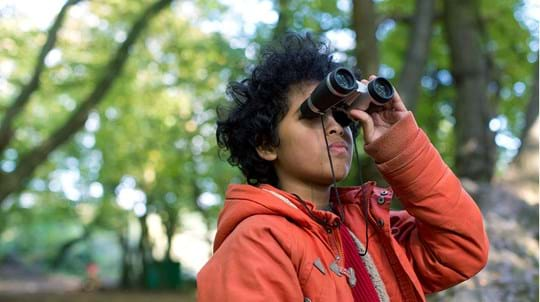
Visiting woods
Things to do in the woods
Go on an adventure. Get closer to nature. Uncover history. Discover ways to explore the UK's woods whatever the season.
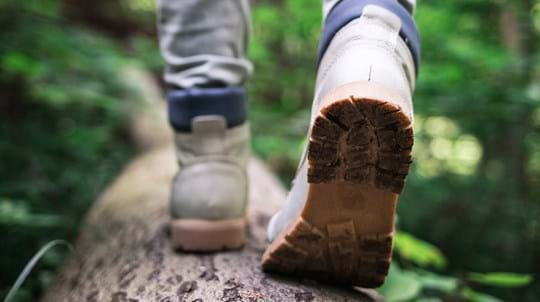
Take an audio tour of this wood
Listen to our Woodland Walks podcast series with host Adam Shaw and special guests.
External link

A lasting legacy
This wood is just one of many to have been protected by gifts in wills, securing it for generations to come. Your legacy gift could also make a real difference to woods, trees and wildlife.
Learn what your gift could mean






















